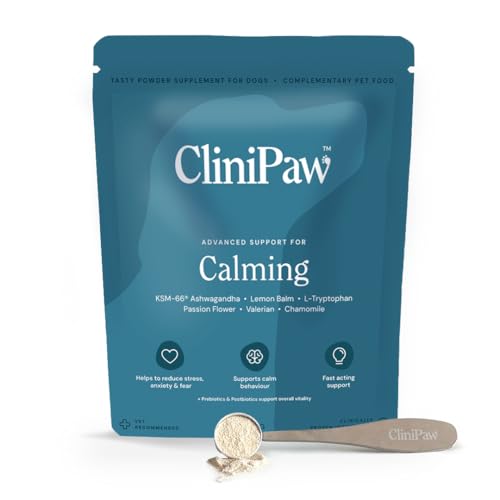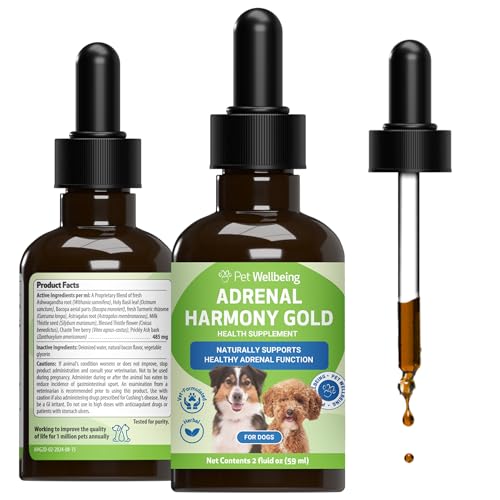




Prior to any grooming session, consider using natural supplements that promote relaxation. Products containing chamomile or valerian root can be beneficial. These ingredients help ease anxiety without the side effects associated with pharmaceutical options.
Creating a soothing environment is equally important. Ensure the grooming area is quiet, well-lit, and free from distractions. Soft music can also contribute to a calming atmosphere. My own experience has shown that a serene space significantly reduces stress for my furry friends.
Another effective method involves desensitising your pet to grooming tools. Gradually introduce clippers and brushes during playtime, allowing them to associate these items with positive experiences. A few treats during this process can make a world of difference.
If your companion struggles with anxiety, consider consulting a veterinarian for tailored advice. In some cases, they may suggest mild medications specifically designed for anxious pets. Always explore this option if you notice extreme distress during grooming.
Lastly, patience is key. Grooming should be a gradual process, allowing your four-legged friend to adjust at their own pace. In my experience, a gentle approach fosters trust and cooperation, resulting in a more pleasant grooming experience for both of you.
Effective Techniques for Calming Your Canine During Grooming
Administering a calming agent must be approached with caution. Consulting a veterinarian before proceeding is critical. They can recommend appropriate options tailored to your pet’s specific needs.
Natural Alternatives
- Thundershirt: This snug garment provides comfort, mimicking a gentle, calming pressure.
- Aromatherapy: Certain essential oils like lavender or chamomile can help create a tranquil environment. Always dilute oils and ensure they are safe for pets.
- Calming Treats: Look for treats containing ingredients such as chamomile or valerian root. These can help ease anxiety.
Behavioural Techniques
- Desensitisation: Gradually introduce grooming tools while rewarding positive behaviour. This builds a positive association.
- Short Sessions: Keep grooming sessions brief initially. Gradually increase duration as your furry friend becomes more comfortable.
- Calm Environment: Ensure the grooming area is quiet and free from distractions. Soft music can also help soothe nerves.
Always observe your pet’s reactions closely. If they show signs of distress, it might be necessary to reassess your approach. Building trust takes time, and patience is key.
Understanding the Need for Sedation
Recognising the signs that a furry friend may require calming measures is crucial. If you notice excessive anxiety during grooming sessions, it might indicate a need for assistance. Common behaviours include:
- Constant barking or whining
- Attempting to escape or hide
- Shaking or trembling
- Aggressive responses to grooming tools
Before deciding on calming methods, consult a veterinarian. They can evaluate health conditions that may exacerbate stress reactions. Some breeds are naturally more anxious than others, making them more susceptible to stress during grooming. Understanding these traits can guide you in choosing the best approach for each individual.
Assessing the Situation
Evaluate the environment where grooming occurs. A noisy or chaotic setting can heighten anxiety. Creating a calm atmosphere can significantly help. Consider these adjustments:
- Use soothing music or white noise
- Limit the number of people present
- Ensure the space is comfortable and familiar
Evaluating the Benefits
There are advantages to using calming techniques. They can enhance the grooming experience for both you and your pet. Benefits include:
- Reduced stress levels during sessions
- Improved cooperation, making grooming easier
- Safer handling, minimising the chance of injury
Understanding the specific needs of a pet is key. Tailoring the approach to each unique personality can lead to a more positive grooming experience.
Consulting Your Veterinarian
Seek guidance from a veterinarian before attempting any calming methods. They can assess health status and suggest suitable options, ensuring safety and effectiveness. A professional evaluation might reveal underlying issues that contribute to stress during grooming, allowing for tailored recommendations.
Understanding Medication Options
Discuss potential medications with the vet. They may prescribe specific tranquilizers or alternatives, considering your pet’s weight, breed, and temperament. It’s crucial to follow dosage instructions precisely, as variations can lead to adverse reactions.
Behavioural Advice
Vets can also offer behavioural tips to ease anxiety. Techniques such as gradual desensitisation to grooming tools or creating a positive association with the grooming process can be beneficial. Incorporating regular, calm handling routines is another effective strategy.
Choosing the Right Sedative
Opt for a mild tranquilliser recommended by a vet, ensuring it’s suitable for your pooch’s size and health. Individual reactions can vary, so starting with a small dose is wise to monitor effects. Common options include acepromazine and trazodone, but each has its own profile of efficacy and side effects.
Assess your canine’s temperament and anxiety levels. A nervous pet might require a different approach compared to a more laid-back companion. For instance, if your fluffy friend has had previous grooming experiences that were stressful, a vet might suggest a stronger option.
Always discuss any prescriptions with a professional. It’s crucial to understand the timing of medication administration; some sedatives need to be given hours before the appointment to take effect. Additionally, consider the grooming environment. A calm, familiar setting can sometimes reduce the need for medication altogether.
Nutrition also plays a role in your pet’s overall behaviour. A balanced diet, like the best dog food for welsh springer spaniels, can impact energy levels and anxiety. Keeping your furry friend well-fed and hydrated before their grooming session can make a difference. Remember, a healthy dog is a happier dog!
Lastly, never try unfamiliar medications without guidance; they can have adverse effects. Your pooch’s well-being should always come first, and professional advice is key to safe sedation.
Preparing Your Canine Companion for Grooming
Start with a familiar environment. Before the grooming session, let your furry friend explore the grooming area. This familiarity can significantly reduce anxiety. If possible, have the grooming tools visible a few days prior to the appointment, allowing them to get accustomed to the sights and sounds.
Establish a routine. Regularly brushing their coat at home can help them associate grooming with a positive experience. Use treats and praise during these sessions to reinforce good behaviour. This not only helps build trust but also makes the actual grooming easier.
Introduce the equipment gradually. Allow them to sniff and investigate the clippers, brushes, and other tools. Gradual exposure helps prevent fear associated with unfamiliar objects. Play with the tools near them without starting the grooming process to create a calm atmosphere.
Practice handling. Get them used to being touched in various areas, especially those that will be groomed. Gently hold their paws, ears, and tail, rewarding them with treats to create a sense of comfort. This practice can make the actual grooming less stressful.
Timing matters. Choose a time when your pet is calm and relaxed, such as after a walk or play session. Avoid scheduling grooming during hectic parts of the day when they might be restless or excited.
Consider soothing music or calming scents. Playing gentle music can create a calming atmosphere. Additionally, using pheromone sprays designed for relaxation can help ease their nerves before the grooming takes place.
Stay patient and calm. Your energy can influence their behaviour. If you remain relaxed, it can help your four-legged friend feel more at ease. Take breaks if necessary, and don’t rush through the process.
Finally, always end on a positive note. Regardless of how the session goes, provide plenty of praise and a favourite treat afterwards. This reinforces the idea that grooming is a good experience and will encourage better behaviour in future sessions.
Administering the Sedative Safely
Always follow the dosage instructions provided by the veterinarian meticulously. Every animal reacts differently to medications, so even slight variations can lead to unexpected outcomes. Timing is also critical; administer the sedative well before the grooming session to ensure it has taken effect. Generally, this means giving it at least 30 minutes prior to the appointment.
Monitoring During Administration
Keep a close eye on the animal after giving the medication. Observe for any adverse reactions such as excessive drooling, vomiting, or signs of distress. If any concerning symptoms arise, contact the vet immediately. Providing a quiet, comfortable space during this period will help them feel secure.
Post-Administration Care
Once the grooming session is completed, allow the pet to rest in a calm environment. Avoid overstimulation; this includes loud noises or heavy activity. Hydration is key, so ensure fresh water is available, but don’t rush them to eat right away. It’s wise to keep the animal under supervision until the sedative wears off to ensure their safety.
Monitoring Your Canine During Grooming
Keep a consistent eye on your furry friend throughout the grooming process. Watch for signs of discomfort or anxiety, which can manifest as panting, whining, or attempts to escape. If you notice any of these behaviours, take a moment to reassure them with a calm voice or gentle touch.
Utilising a leash can help maintain control. Ensure it’s not too tight, allowing your companion to feel secure without feeling trapped. Position yourself where you can easily observe their reactions while attending to the grooming tasks. If the situation becomes overwhelming, don’t hesitate to pause and give them a break.
Creating a soothing environment with low lighting and soft music can significantly reduce stress. I’ve found that a little bit of white noise works wonders, as it drowns out any sudden sounds that might startle them. You might also consider using calming sprays or pheromone diffusers to promote relaxation.
Always have treats handy to reward good behaviour. Positive reinforcement can make a significant difference in their attitude towards grooming. By associating the experience with rewards, you’ll likely notice a gradual improvement in how they handle the process.
If grooming involves tools that create noise, like clippers, introduce these slowly. Allow your pet to sniff the tools before turning them on. This familiarisation can greatly reduce anxiety. And remember, keeping a calm demeanour yourself will help your furry companion feel more relaxed.
In case of any unexpected reactions or if you feel out of your depth, don’t hesitate to consult a professional groomer or vet. Their expertise can provide additional insights on how to manage the situation better. For those times when you need reliable tools, check out the best dewalt air compressor to assist with your grooming needs.
Post-Grooming Care and Recovery
After the grooming session, it’s crucial to ensure a smooth transition back to normal activities. Start by providing a quiet space for your pet. They might feel disoriented or tired, so a soft bed in a familiar environment can help them relax.
Hydration and Nutrition
Keep fresh water available at all times. A light snack can also be beneficial, but avoid heavy meals immediately after grooming. It’s best to wait a couple of hours before offering their regular food to prevent any stomach upset.
Monitoring Behaviour
Observe their behaviour closely for the next few hours. Look for signs of discomfort, such as excessive panting, pacing, or reluctance to move. If any unusual symptoms arise, reach out to a vet for guidance. Regular check-ins can help identify any issues early.
| Signs of Discomfort | Action to Take |
|---|---|
| Excessive panting | Provide cool water and a calm environment. |
| Pacing or restlessness | Encourage gentle movement, offer a favourite toy. |
| Refusal to eat or drink | Wait a few hours; consult a vet if it continues. |
| Vomiting | Withhold food and water for a short time; consult a vet. |
Brushing their coat gently after grooming can help remove any loose hairs and allow you to assess their skin condition. This can also be a bonding experience, helping reassure them after the grooming session.
Finally, don’t forget to reward them with plenty of praise and a special treat. This positive reinforcement will create a favourable association with the experience, making future grooming sessions easier.










